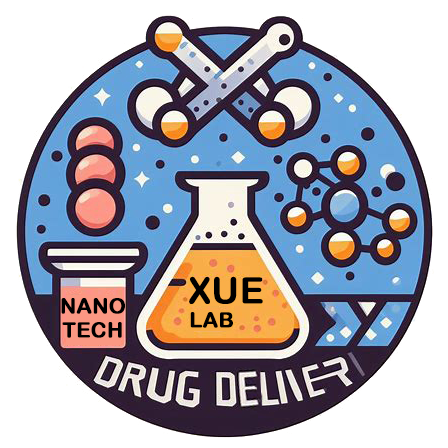Han and Haijing's work has been published online at Biomaterials, Cheers
陈晗同学和海晶博士的工作发表在生物材料TOP期刊《Biomaterials》上,祝贺两位!Cheers
链接:https://www.sciencedirect.com/science/article/pii/S0142961224002795
感谢主编和审稿人的认可!


免疫治疗作为最有前景的肿瘤治疗方向,可通过激活机体抗肿瘤免疫应答以抑制肿瘤发展并预防复发。然而,因肿瘤内淋巴细胞浸润有限(即“冷”肿瘤)和免疫抑制的肿瘤微环境(TIME),导致其在临床治疗中的应答率较低。固有免疫应答的激活有望成为提高肿瘤免疫治疗有效策略。其中,先天免疫核酸感受通路中干扰素基因刺激蛋白STING对于逆转肿瘤微环境免疫抑制,提升免疫应答率至关重要。然而,系统给药后微弱的肿瘤富集效果和脱靶副作用等缺陷极大限制了小分子STING激动剂在各种恶性肿瘤的治疗应用。设计合适的药物载体对小分子STING激动剂进行精准递送,成为一种安全有效的新型免疫治疗策略。目前研究认为金属锰离子(Mn2+)可有效增强cGAS-STING信号,并通过金属配位作用驱动纳米颗粒的自组装行为。因此,开发基于锰配位的纳米颗粒可作为激活并增强基于STING抗癌免疫的有效策略。但具有“冷”和免疫抑制微环境的侵袭性肿瘤可能无法仅通过先天免疫治疗得到有效抑制。
针对以上科学难题,团队构建了一种具有谷胱甘肽响应性的多重免疫刺激纳米平台(Mn-MC NPs)。该平台旨在高效递送小分子STING激动剂,并联合光热治疗,搭建先天免疫与适应性抗肿瘤免疫的桥梁以增强Mn2+驱动STING通路的免疫活性。该免疫刺激纳米颗粒由光敏剂(Ce6)和STING激动剂(MSA-2)通过Mn2+驱动配位,进一步聚乙二醇(PEG)化而成。在小鼠皮下肿瘤模型(乳腺癌和黑色素瘤)中,Mn-MC NPs在静脉注射后可通过被动靶向作用富集到肿瘤区域。在酸性和GSH过表达的肿瘤环境中,Mn-MC NPs被降解释放大量的Mn2+离子和STING激动剂,强烈而持久地激活cGAS-STING途径,从而引发先天抗肿瘤免疫;同时,Ce6发挥强大的光疗作用,促进肿瘤消融并诱导免疫原性死亡(ICD)效应,引发强烈的适应性抗肿瘤免疫。两者共同促进树突状细胞成熟,提高效应T细胞的增殖和浸润,增强抗肿瘤免疫反应,从而实现远处和转移性肿瘤的有效抑制。此外,它们还有助于通过促进长期免疫记忆来预防肿瘤复发。综上,本研究有望通过构建多重免疫刺激纳米颗粒,有效克服抗肿瘤免疫不足和癌症治疗无效的局限性。
Abstract
Stimulator of interferon genes (STING) agonists have shown promise in cancer treatment by stimulating the innate immune response, yet their clinical potential has been limited by inefficient cytosolic entry and unsatisfactory pharmacological activities. Moreover, aggressive tumors with “cold” and immunosuppressive micro- environments may not be effectively suppressed solely through innate immunotherapy. Herein, we propose a multifaceted immunostimulating nanoparticle (Mn-MC NP), which integrates manganese II (Mn2+) coordinated photosensitizers (chlorin e6, Ce6) and STING agonists (MSA-2) within a PEGylated nanostructure. In Mn-MC NPs, Ce6 exerts potent phototherapeutic effects, facilitating tumor ablation and inducing immunogenic cell death to elicit robust adaptive antitumor immunity. MSA-2 activates the STING pathway powered by Mn2+, thereby promoting innate antitumor immunity. The Mn-MC NPs feature a high drug-loading capacity (63.42 %) and directly ablate tumor tissue while synergistically boosting both adaptive and innate immune responses. In subcutaneous tumor mouse models, the Mn-MC NPs exhibit remarkable efficacy in not only eradicating primary tumors but also impeding the progression of distal and metastatic tumors through synergistic immunotherapy. Additionally, they contribute to preventing tumor recurrence by fostering long-term immunological memory. Our multifaceted immunostimulating nanoparticle holds significant potential for overcoming limitations asso- ciated with insufficient antitumor immunity and ineffective cancer treatment.
